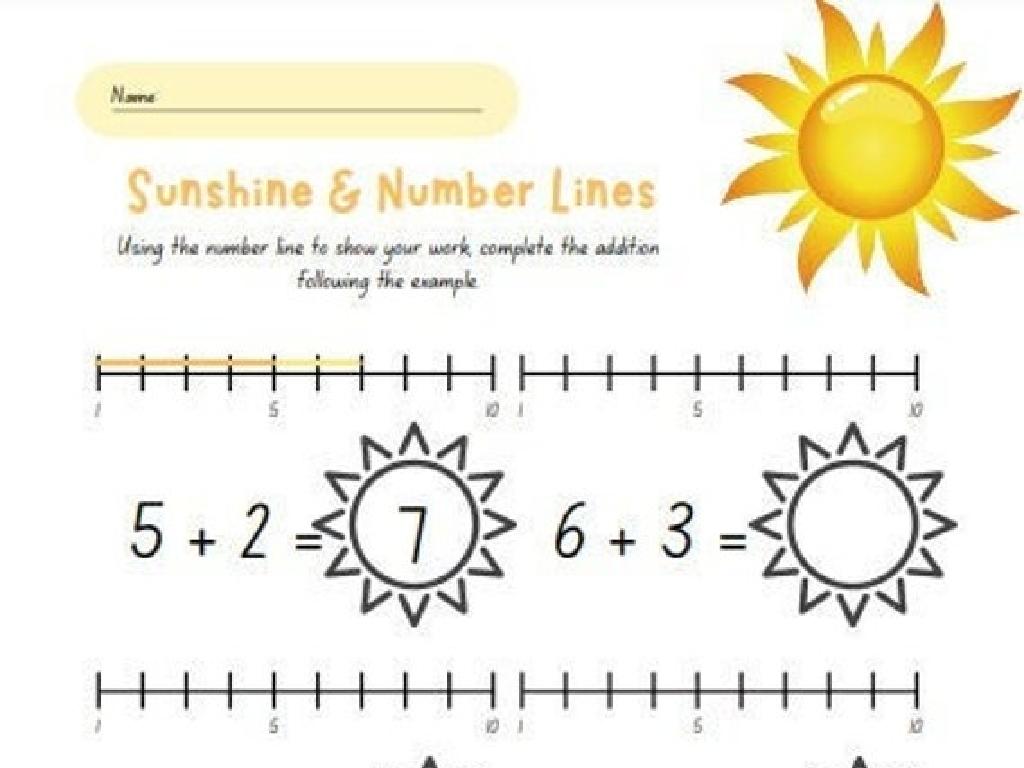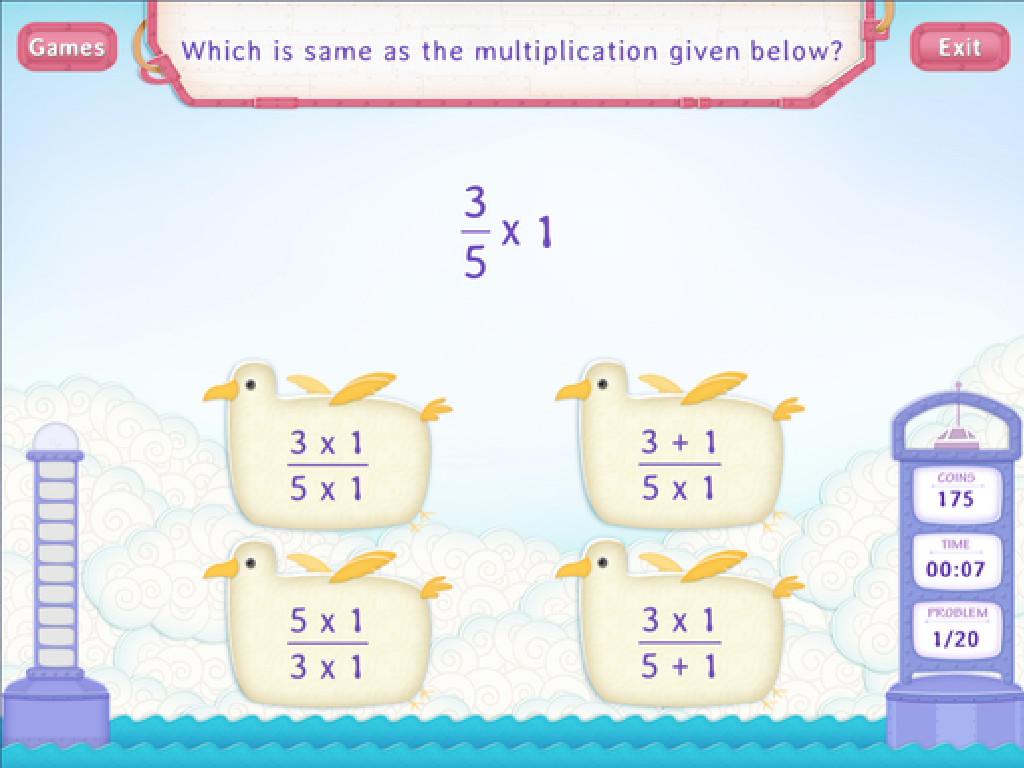Which Table Is Correct?
Subject: Math
Grade: First grade
Topic: Data And Graphs
Please LOG IN to download the presentation. Access is available to registered users only.
View More Content
Welcome to Data and Graphs!
– Greet the class: Good morning!
– Today’s topic: Tables and Graphs
– Understanding correct tables
– Tables organize data in rows and columns
– Fun activity: Find the right table
– We’ll look at examples and choose the correct one
|
Begin the class with a warm greeting to set a positive tone. Introduce the concept of tables and graphs, emphasizing their role in organizing information in a way that’s easy to understand. Explain that a correct table displays data accurately and clearly. Engage the students with a fun activity where they will look at different tables and use their critical thinking to determine which one represents the data correctly. This will help them grasp the importance of accuracy in data representation. Provide guidance and examples to ensure they understand how to identify the correct table.
Understanding Tables in Math
– What is a table?
– A table displays information neatly
– Tables have rows and columns
– Rows go across, columns go up and down
– Tables organize data
– Like a chart for numbers and facts
– Easy to understand information
|
This slide introduces the concept of tables to first-grade students. Begin by explaining that a table is a way to show information in an organized manner. Use simple language to describe rows as lines that go from left to right, and columns as lines that go from up to down. Emphasize that tables help us sort and understand data easily. You can use examples like a chore chart or a snack schedule to illustrate the concept in a way that is relatable to the students. Encourage the children to think of tables they’ve seen in their daily lives and discuss how those tables helped them understand the information presented.
Understanding Tables with Fruits
– Tables show information neatly
– Rows tell us about each fruit
– Like apples: 5, bananas: 3, oranges: 4
– Columns explain one detail
– One for fruit names, one for amounts
– How many fruits do we have?
– Count fruits in the table’s rows
|
This slide introduces students to the concept of tables as a way to organize data. Start by explaining that a table helps us see information clearly and find what we need quickly. Show them how each row in the table represents a different fruit and the corresponding number shows how many of that fruit we have. Clarify that columns are vertical and help categorize information, such as one column for the names of the fruits and another for the numbers. Engage the students by asking them to count the number of fruits listed in the table to ensure they understand how to read the data presented. This activity will help them recognize patterns and start to interpret basic data in a table format.
Which Table is Correct?
– Two tables can show different info
– Imagine two lists of what friends ate: they might not match.
– We must look closely to choose right
– Check each table: do the numbers and facts make sense?
– Learn to find the correct table
– We’ll practice steps to pick the table that shows true info.
|
This slide introduces the concept of data comparison for first graders. Start by explaining that sometimes we have different tables showing information about the same thing, like a list of favorite fruits or the number of pets each friend has. Teach them to look at each table carefully and compare the information to see which one makes sense. Use simple, relatable examples to illustrate the point. For instance, if one table says a friend has 10 dogs and another says 2, we can discuss which might be correct. Encourage the students to ask questions about the data and guide them through a step-by-step process to determine the accuracy of each table. This will help them understand the importance of accuracy in data representation.
Detecting Errors in Tables
– Spot the odd details
– Look for items that seem out of place.
– Do the numbers match up?
– Add the numbers to see if they total correctly.
– One topic per row/column
– Ensure each row or column sticks to a single subject.
– Practice with examples
– We’ll try finding mistakes in class together!
|
This slide is aimed at teaching first graders how to find mistakes in data tables. Start by explaining that tables help us organize information so we can understand it better. Encourage the students to look for things that don’t seem right, like a picture of a cat in a row of dog pictures. Show them how to check if numbers add up by using simple addition. Reinforce the idea that each row and column should only be about one thing to avoid confusion. During the class, use simple, relatable examples and engage the students in an activity where they can practice these skills by identifying deliberate errors in sample tables.
Class Activity: Table Detectives
– Become a table detective
– Examine two different tables
– Look at the numbers and see if they make sense
– Work with a partner
– Discuss with your buddy why you think one table is right
– Decide which table is correct
– Use your detective skills to choose the correct table
|
In this activity, students will engage in a fun and interactive exercise to enhance their understanding of data representation in tables. Provide two tables with simple data relevant to first graders, such as numbers of fruits or toys. One table should have a clear mistake or inconsistency. Encourage the students to work in pairs to foster collaboration and discussion. As they compare the tables, guide them to look for patterns or errors in the data. Possible activities could include finding which table correctly counts the number of apples in a picture, which table accurately represents the number of days in each week, or which table correctly matches animals to their sounds. The goal is for students to practice identifying accurate data representation and to understand that tables are a way to organize information clearly and correctly.
Review and Share: Understanding Tables
– Reviewing table concepts
– Discuss the correct table
Why did the correct table show the right information?
– Share your findings
Tell us about the table you think is right.
– Class discussion
|
This slide is aimed at reinforcing the concepts learned about tables and their correct use in representing data. Start by reviewing the key points about what makes a table useful for organizing information. Ask students to volunteer answers on why the correct table they chose was the right one, focusing on its clarity and accuracy in displaying data. Encourage them to share their findings with the class, which could include how they identified the correct table and what features made it stand out. Facilitate a class discussion that allows students to learn from each other’s observations and reasoning. This activity will help solidify their understanding of tables and how to interpret them.
Great Job, Detectives!
– Celebrating our table detectives
– Tables organize data
– Like sorting toys into boxes
– Understanding data with tables
– They help us see patterns and counts
– Practice makes perfect
|
This slide is a congratulatory closing to reinforce the importance of tables in understanding data. Emphasize the role of tables in organizing information in a way that’s easy to see and understand, much like sorting toys into different boxes. Highlight how tables can show patterns, like how many of each toy we have, making it easier to compare and make sense of data. Encourage the students to keep practicing reading and creating tables to become more confident in their skills. As a follow-up activity, consider having students practice by sorting classroom items into categories and representing the data in a table format.






